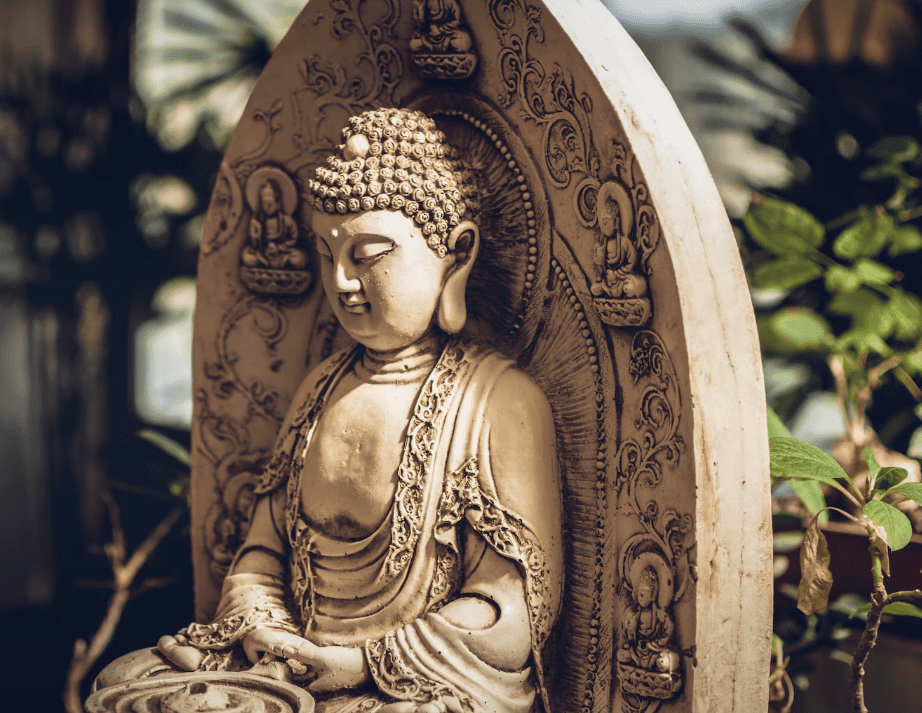Where Meditation Originated
Learn about the history of meditation and its beliefs.

Selfpause Affirmation App
Download the app to get 1,000’s of affirmation meditations and everything you need to write, record and listen to your own.
There are several different beliefs about where meditation originated. In this article, we’ll look at Buddhism, Hinduism, Sufism, and Christianity. These are all different traditions, but they all share some similarities. In addition, they all emphasize the benefits of meditation. While these beliefs can be challenging to understand, they can also help to understand the practice of meditation more thoroughly.
Buddhism

Buddhism is where meditation originated, and it has influenced Western meditation practices since the beginning of the 20th century. The Mahayana school of Buddhism first appeared around the 1st century C.E. in China, Japan, and Tibet. Its practice focuses on texts called sutras and emphasizes that lay people can be good Buddhists. While meditation is one of the most popular forms of Buddhism, it is not the only method of attaining Nirvana. This school of Buddhism believes that Buddha Mind and Buddha Nature are separate from each other and that all human beings are born from Emptiness, not nothing. This is the Source of all Existence and is the potential for enlightenment.
Meditation has been widely used by civilizations from different eras and has evolved to become an important part of modern life. It is an effective tool to calm the mind and focus attention. Millions of people around the world incorporate it into their daily lives. According to scholars, meditation originated in hunter-gatherer societies in the Indus River Valley around 5,000 B.C.E. It later spread to other parts of the world, and almost all major religions have some form of meditation today. However, modern meditation practices are primarily attributed to Buddhism in India.
Hinduism

Several Hindu scriptures are rife with references to meditation, acceptance, and silence. Buddhists, meanwhile, incorporate meditation into their religious practices. These religions share similar beliefs about the power of meditation, and they share the same goals of focusing the mind and reaching union with the divine.
In the United States, Hinduism has made a strong impact on the world of meditation. It has spread to the point that over 6 million people practice transcendental meditation alone, and millions more practice other forms of meditation. Meditation has many benefits, according to health and wellness experts, including improved anger management, reduced blood pressure, reduced cardiovascular disease, and post-traumatic stress, among others. In addition to a positive effect on the body, it is also a great way to live a more fulfilling life.
Among Hindus, meditation is closely associated with a sense of morality. According to Hindu philosophy, Sila refers to the virtue of removing worldly thoughts. The practice of meditation is largely a matter of self-knowledge and action. However, many people fail in their efforts to be mindful.
Sufism

Sufism is an ancient branch of Islam that emphasizes universal love and peace, acceptance of different spiritual paths, and mystical union with God. One of the main traditions of Sufism is Sufi meditation, which has been practiced for thousands of years. The Sufi movement has roots in the seventh century and has spread throughout the world. One example of the Sufi movement is the whirling dervishes, who performed continual twirling with one hand pointed upward. They are still in practice today and were once part of a Smithsonian symposium on Sufism.
Sufi meditation practices are based on the Sufi tradition of connecting with God through prayer. It is a form of heart-based meditation that often involves the repetition of a mantra. This mantra, or Dhikr, is a way of connecting to God. This practice is often accompanied by breathing exercises and movements designed to disrupt ordinary consciousness. If you are interested in learning more about Sufi meditation, many Sufi groups have websites to help you get started.
Sufism also focuses on gaining a deeper understanding of one’s true self. Among other things, Sufism believes that overcoming nafs (emotional distress) is essential to spiritual growth. This includes overcoming false pride, greed, envy, lust, and backbiting. By overcoming these issues, one can find forgiveness for past sins and achieve a state of “The Contented Self,” wherein one lives in the present moment.
Christianity

The word meditation has a varied history, but its origins are most likely found in the Bible. Two Hebrew words, siah, and Haga, mean “to meditate,” meaning “to speak,” and “to contemplate.” In the New Testament, meditation is usually described as meletao. In 1 Timothy 4:15, Paul emphasizes the need to teach God’s word and to be diligent in the practice of meditation.
The Christian religion has numerous traditions and practices of meditation. While some Christians warn against the practice as a form of mysticism or New Age beliefs, most Christians embrace the practice as a way to worship God and achieve enlightenment. Lectio Divina, for example, is a form of Christian meditation and involves reading scripture carefully and slowly. Priests lead the practice, which often involves sitting quietly and meditating on the words of the Bible.
Mediation has a very long history in the East. During the Warring States period, a Chinese text called the Zhuangzi describes meditative practices. Similarly, the ancient Japanese culture added meditative practices to their own religions, such as zen. In the 12th century, Islamic mysticism took meditation seriously. Meditative techniques involved repeating sacred words and breathing heavily.
India

Meditation is an ancient practice that originated in the Indian subcontinent. Thousands of years ago, people were seated in meditation with their eyes closed, as seen in cave paintings. This is evidence of meditation practice that dates back to about 5,000 BCE. The practice of meditation is also mentioned in the Vedas, the oldest known Hindu text. These texts were originally oral but were transcribed into written form around 1,500 BCE. The Vedas were also the foundation for Hindu philosophy and spirituality, which includes the practice of meditation.
There are several written records of meditation practice in India, beginning in the third century before the common era. The practice was soon adopted by neighboring cultures and became part of numerous religions. The term “meditation” itself was first used in the 12th century AD, originating from the Latin word meditatum, which means “to meditate.” Meditation is one of many modalities used in Ayurveda, an ancient, comprehensive system of natural health care.
There are five vows common to nearly all meditative paths in India. These vows allow participants to deconstruct destructive habits and actively construct an ethically grounded world. A result is a person who is purified and exhibits enlightened behavior. For example, a purified individual will be friendly toward those who are successful, compassionate toward those who suffer, and happy for others who have merit.
Burma

The practice of meditation is a practice with roots in Burma. During the early centuries of Buddhism, laypeople did not consider the technique innovative and instead looked to the Buddha for guidance and inspiration. Early Buddhist texts, known as suttas, contained discourses on breathing and the foundations of mindfulness. This practice has evolved to become one of the standard modes of insight meditation in Burmese practice traditions.
After the king’s death, the Burmese laity began organizing at a grand scale, holding scriptural exams for monks and pooling their resources to feed whole monasteries. The practice of meditation took root during a time of turmoil in Burma’s history, including insurrections, political unrest, and economic hardship.
In early 20th century Burma, meditation became a powerful tool in the defense of Buddhism. It was also a way to improve the karma of society. Prior to that time, the awakening was considered unattainable by most people. Nevertheless, key figures harnessed laypeople’s empowerment and knowledge to protect Buddhism from colonial policies and missionary attacks.
Transcendental Meditation

Transcendental Meditation is a practice where you focus on the chanting of a mantra. This chanting can calm your mind and allow you to have a clear focus. It has a beneficial effect on the central nervous system, mind, and body. This practice helps people achieve heightened states of awareness that allow them to take better control of their lives.
The Transcendental Meditation movement began in the early 1970s. Maharishi created the “World Plan Executive Council” to promote the practice around the world. This executive council had different divisions aimed at introducing meditation into different areas of human life. In the mid-1970s, the WPEC introduced the “Siddha” program. This new meditation technique promised to teach people supernormal abilities. It claimed to help people achieve levitation and other supernormal abilities.
The origin of meditation has been debated, but evidence suggests that the practice dates back to the 1st century BCE. Some ancient religious texts, such as the Pali Canon of the Theravada Buddhist tradition, describe meditation practices. Further, there is evidence that meditation is a practice that was practiced in Judaism. The Torah tells of Isaac sitting in a field and achieving ‘lasuach’ – a state of mind that is believed to be a form of meditation.
Hatha Yoga

Hatha Yoga is a branch of yoga that focuses on the physical practice of postures and breathing techniques. The practice dates back thousands of years. It is often practiced as a vehicle for meditation, as it prepares the body and nervous system to be still and serene. It can improve physical strength, stamina, and mental clarity. The term itself is derived from the Sanskrit words ‘Ha’ and ‘Tha’, which mean sun and moon, respectively. The practice of Hatha Yoga is thought to unite the two energies, allowing the practitioner to experience the true nature of meditation.
In 1893, a young Swami Vivekananda attended the Parliament of Religions in Chicago and introduced yoga and Vedanta to the United States. His enormous success opened the floodgate to a new world of practitioners. A decade later, in Boston, Paramahansa Yogananda founded the Self-Realization Fellowship. Then in the United States, Yogendra Mastamani introduced Hatha Yoga to the masses. Today, this practice is taught in over 50 countries around the world.
Our Top FAQ's
The practice of meditation is believed to have originated in ancient India, although it has roots in various spiritual traditions and cultures around the world.
In ancient cultures, meditation was often used as a means of achieving spiritual enlightenment or a deeper understanding of the self and the universe. It was also seen as a way to cultivate inner peace and stillness.
Over time, the practice of meditation has evolved and taken on many different forms and variations, depending on the culture and tradition in which it is practiced. Some forms of meditation focus on the breath, while others involve the repetition of mantras or visualizations.
One common misconception about the origins of meditation is that it is a purely Eastern or Buddhist practice. However, as mentioned above, meditation has roots in many different spiritual traditions and cultures around the world.
Some of the different forms of meditation that have developed in various cultures around the world include mindfulness meditation, Transcendental Meditation, Zen meditation, and Loving-Kindness meditation.
